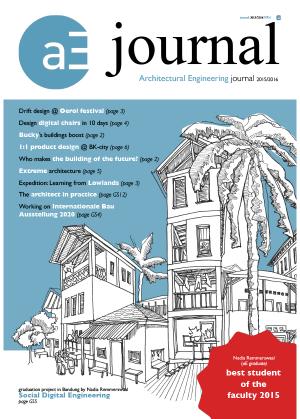Hosted by
aE Journal 2015/2016: Who Makes the Building of the Future?
Synopsis
What influence does the architect have in the future? Who is the master builder of the future and is the profession definitely going towards being an architectural stylist employed by the creative or construction industry? And if the architect no longer has a dominant position, is he therefore sliding into ‘the middle of the road’: making buildings and environments with a dull, mediocre quality, mostly only obliging the feeble wishes of consumers, and where experimentation and progress can no longer be found as recognizable design themes. Is the architect still the most suitable person to firstly bear the responsibility? There is a tendency to see the architectural component as a part that you can manage. The position of the Dutch architect has been eroded in recent decades and has suffered even more serious blows as a result of the recent crisis.
That brings me to the question: Who makes the building of the future? The architect, the real estate owner or the society by means of participation? Who has final responsibility?
There is hope. Nowadays, you see young, mostly newly graduated architects designing and producing their own buildings or building components through trial and error as their own boss. A very interesting trend in which the architect appropriates his or her traditional core task in essence and experiments with new methods and technologies.
At the same time, the engineering firms seem to be experiencing better times again and there is an opportunity for architects as seasoned designers to enclose themselves in an environment of strong engineers. And that is what we need to arrive at, a good architecture: integral design and engineering.
Well-educated and professionally experienced architects must be the pioneers of good buildings and urban structures, which also have an added value from a cultural perspective. This must be stimulated. The complexity of the assignments is enormous. Large architectural questions relating to urban and landscape environments are waiting for us, in which it is important that these can be taken on by the right talents with the right attitude.
These are new times, and they are about new content and search for innovation. Let’s create new value to make progress!
Please take a look at our intecture goals in this journal and join us in renewing the assignment.

